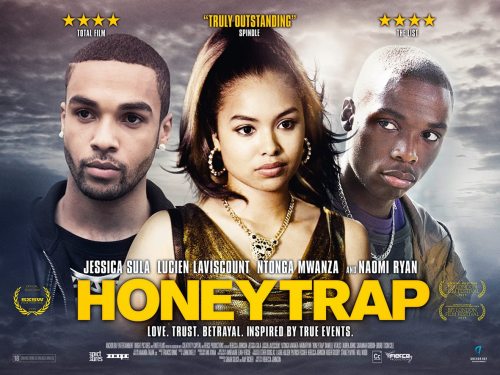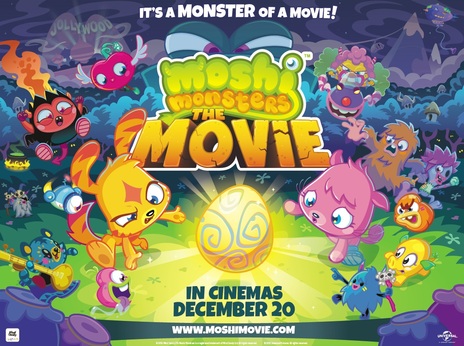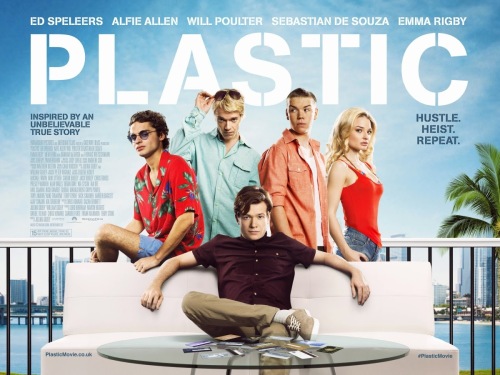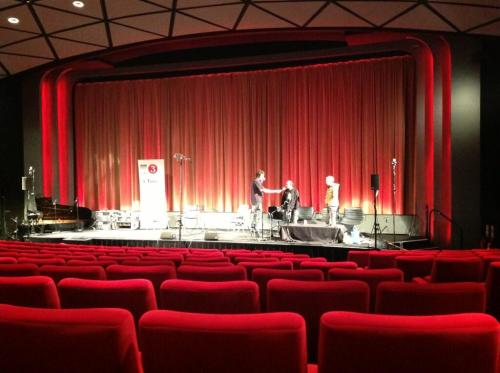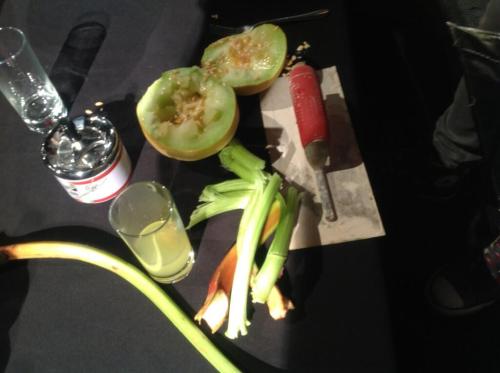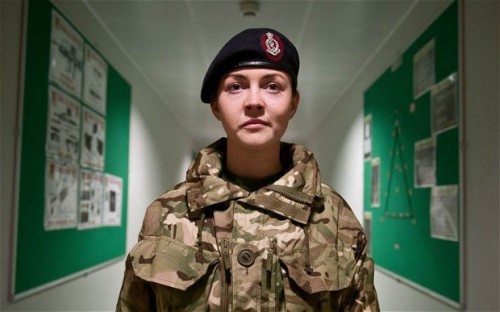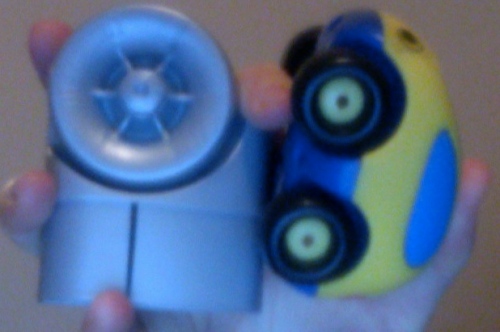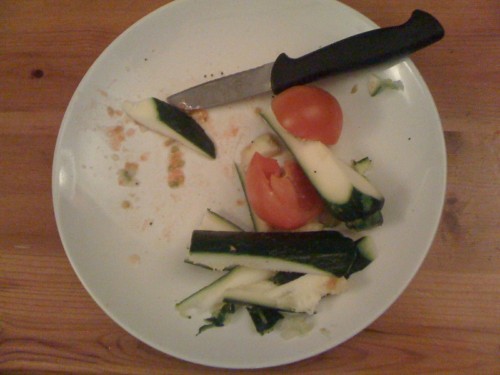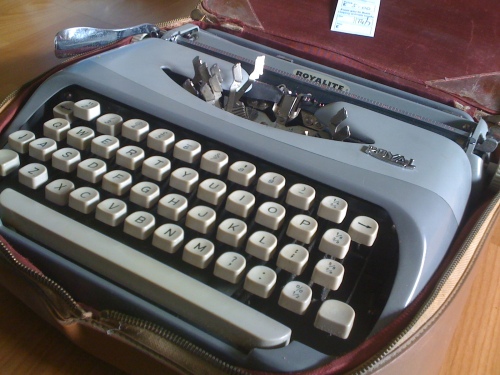This week is brilliant! I’m in an irritatingly good mood.

Yas!
Last November I received an email from Ben Swann, Learning Officer at The All England Lawn Tennis & Croquet Club (AELTC). I read Ben’s email, re-read it, did a little dance and looked at it a few more times before responding.
For those that didn’t grow up in a family obsessed with the annual events going on in London’s SW19 postcode at this particular time of year, the AELTC is the organisation that looks after the assets and operations of the Wimbledon Championships. Ben’s Learning programmes operates within Wimbledon Lawn Tennis Museum and alongside the Wimbledon Foundation – the charitable arm of the club who offer grants and activities to improve the social needs of local communities and encourage young people of all backgrounds into the sport of tennis.
Since 2011, the Learning Department have conducted a Community Arts Project, commissioning creative professionals to work with local young people on a project related to the Championships. This year, Ben took inspiration from the behind-the-scenes videos of Foley artists finding unexpected creative solutions in the studio on films. His idea was to work with some visually impaired young people in recreating the sounds of a tennis match played at Wimbledon, using creative objects instead of a ball and racquet.
I scuttled over to the club one chilly afternoon before Christmas – wearing the only pair of shoes I own that aren’t sporting some gaffer tape residue or telling scuffs – with a degree of nervousness in my step. All elements of salesmanship flew out the window when I met Ben and he offered to show me Centre Court. That was it, from that moment on I spent the forthcoming months doing a terrible job of disguising my fandom and sheer delight in working on what has become my favourite project so far. By the end of the day’s meeting we were contemplating whoopie cushions, rubber chickens and champagne corks. The more down-to-business elements of our meeting resulted in the idea to record a group of young people from the Wandsworth Vision Support Service performing tennis sounds within the grounds, recording a number of crowd tracks on centre court and use these recordings to compile a soundscape. A selection of sounds from this would be compiled as ‘one-shots’ – short and distinct sound selections from the recordings – that were instantly recognisable as a Wimbledon or tennis motif. These would be broadcast to those in the ticket queue on match day.
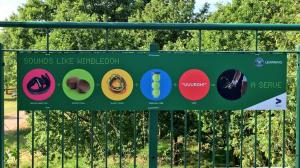
One of 8 motifs used on the bridge
Now I can squeeze, rattle and hit a number of objects no problem but we needed a recordist. I was also keen to have help and a second pair of ears with the soundscape and mix. My friend Rick Blything had begun freelancing at the same time as me and is a true field recording aficionado. Thankfully he was similarly keen to work on and bring his own ideas to the project. Between the three of us, we had a solid plan; through the use of field and ‘studio’ recordings, we’d create the experience of a day at Wimbledon during the Championships. Starting with the dawn chorus on Henman Hill, then lawn mowing and lines marking activity of the groundskeepers, the arrival and milling about of the crowds, seating of spectators and of course, the match itself.
The plans were in place, Rick was keen to make the most of the opportunities afforded to record on-site. The early morning recording of Henman Hill was both enjoyable and bonkers. I had to get a night bus to get there in time; this was the least pleasant moment of the project. On the plus side, we captured the true essence of Wimbledon waking up on a spring morning. The awakening of birds, the first District Line trains clattering away in the distance, Heathrow gearing up for another day of international travel and Ben coming up onto the Broadcast Centre roof armed with two welcome cups of tea. We later returned to record the grounds staff and mechanics. Rick, armed with his array of Sound Devices recorders and microphones (absent minded Foley artist has forgotten the names of said microphones held within their furry blimps), captured their lawnmowers, squeaky line markers, blade sharpeners, engines and the fellows themselves. Groundskeeper Will inspired the opening to our soundscape – we wanted a little back and forth between the staff. Whilst we recorded him talking about his daily activities at the club, we didn’t have him in casual conversation. A workaround was achieved by recording Rick acting as a groundsman in Hackney’s Victoria Park and managing to represent Will’s voice with an old recording Rick had of some steam railway volunteers in the east of England.
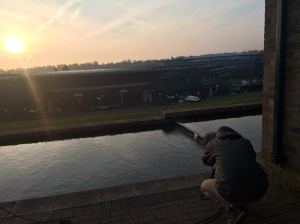
Top of Henman Hill at 6am
The day with the young people (plus a visually impaired tennis player) began with Ben’s introduction to the Club and Championships, followed by my presentation of what Foley is and some of the interesting sounds we make and why. Rick then demonstrated what a field recordist does with all their equipment and the various places they go. So with everyone up to speed on the day’s schedule, we took a stroll over to the Broadcast Centre and the awaiting set of objects in our reserved recording space. The previous day Rick and I had compiled a list of different sounds that we wished to record, the participants came up one-by-one and either performed or recorded them. Once complete, we headed over to Centre Court for a turn at recording the young people performing a variety of whoops, hollers, cheers and applause. For fun we also recorded the more recent spectator sound – that of Hawkeye reactions, where the crowd climax a slow clap to a cheer or disappointed sigh when a player’s challenge to a call is displayed on the screens.

Ben having a go himself
That evening Rick and I shared a very welcome ale and scheduled our forthcoming week of editing and subsequent mix. We confidently split up the responsibilities of atmosphere and crowd tracklay for Rick, leaving the tennis play and other ‘Foley’ items to myself. The following week was an interesting exercise in constructing the sound of a day at Wimbledon; tracklaying a sound piece without any picture proved to be frustrating and a learning curve. In the end, I used a classic Nadal vs Federer match as a pictorial guide. This was essential in gauging the timings between the ball hitting the ground after each hit and the time in which a return of serve would occur.
Some extra challenges we faced during the tracklay included the restriction of working within an audio-only environment. So many ideas that we tinkered with didn’t really work without any visual context. The young people had gotten to meet the Club’s famous Rufus the Hawk (he chases away pigeons from the courts to avoid play disruption). Rick recorded him alongside his handler, Imogen. The young people also did a great job recording his wing flaps (soft leather gloves) and his little bell on his legs (a couple of Chinese bells I found in an antiques market). We edited together a little sequence of him flying around but in the soundscape it sounded a bit miscellaneous; the sound of Rufus would instead be used as part of the one-shots on The Queue bridge.
Another problem we had was judging the timing of each section. Working out how long to run the introduction and finale sections, how to successfully suggest the start of a match and finish it on Championship point all in a short period of time. There was a lot of back and forth between Rick and myself, there was also a lot of extra recording to do! We worked out that in the absence of visuals, the human voice told our story whilst the sound effects and atmospheres set the scene. We returned to Centre Court and interrupted the lunchbreak of Ben’s colleagues for an extra recording of crowd and applause. This was to help pad out the recordings and also obtain a vital rumble track, the sound of folks arriving and settling into their seats and also for a few tails of applause and cheers fading to silence. Whilst in the Club Rick performed a few players’ grunts and cough track in Court Number 1. My other half was also recruited for the essential umpire track. In fact we’d have been very stuck without said track as often it was vital to maintain the narrative thread. In fact the recordings, by a Wimbledon native herself, were so useful that we had to change the match from men’s to women’s when Ben pointed out that a female umpire would only work on a women’s match. Out went Rick’s Court Number 1 grunts, and we found ourselves back in a London park recording me running around making grunting sounds. Some local dog walkers expressed curiosity and concern.
The primary issue upon tracklaying and ultimately the mix was making these unusual objects really sound like moments of a tennis match. We knew that there would be a little compromise in authenticity when using such unusual items and creative works do (and in my opinion should) receive embellishment and enhancement. Nonetheless, we realised that these recordings of ours needed complimentary treatment by layering up library tennis balls hits, some stadium crowd and the occasional gunshot. We had to come back to the recording process one more time to add some carpet footsteps (tennis players’ feet sound quite scuffy) and, in terms of the ball hitting the net, we recorded a few snaps and shakes of a leather satchel bag strap.
With our soundscape in good shape, we submitted to Ben and quaffed ale in the springtime sunshine (wearing jumpers because this is England). Listen to it here and see a selection of the props being recorded in the movie…
http://www.wimbledon.com/en_GB/visitandtickets/community_art_project.html
Then we remembered that the days with the young people was filmed. Once edited, Grapefruit Films send over two videos for Rick and I to mix. In fairness much of the mixing process involved me watching him do various things to the production sound and me eating biscuits. We agreed to split up and leave him to mix the videos whilst I complemented the picture with effects from the soundscape where necessary. These videos are great because I get a wonderful opportunity to look back and wonder why on earth I make such ridiculous facial expressions when talking to people. Please help me.
So despite the challenges that came with the brief, we managed to create the soundscape, one-shots and videos without too many headaches. As is always the case, a project with an enthusiastic and creatively minded client makes the challenges seem minimal when compared to the triumphs. We were given feedback from the Club that the young people enjoyed their day with us and found the hidden art of effects recording to be interesting. It was definitely the most creatively challenging project I’ve worked on: trying to come up with items for the tennis ball hits was difficult. Here’s a list of them for your intrigue:
Tennis ball hits – half a coconut shell with some fabric over the top, elastic twang, empty tube of tennis balls and kiwi catching.
Racquet whoosh – inner tube of bicycle tyre (swung by Rick and myself for altering pitches)
Ball bounce – kiwi bounced on coriander
Player’s feet – shoes on coriander and shoes on carpet
Net hit – long metal strip hit and wobbled, leather satchel bag strap hit and wobbled, microwave beep
Rufus the Hawk – leather gloves, old bells and both Rufus’ voice and that of his handler
Tube of balls open and ball roll out – sweets tub, kiwis, coriander, can of fizzy drink and tin of beans
Opening racquet bag – ruckack zip, shoes velcro and… a racquet (I realise this isn’t the Ben Burtt moment of our careers)
The Club’s learning department will be featuring a sound board on their website at the end of the Championship (it’s almost as if they are too busy doing something else this fortnight). These will be the one-shots that are currently features on the bridge.
The Club were extremely kind and generous to give Rick and I tickets to see a match this Championship. I went along on Monday and shed an embarrassing tear in Centre Court. I’ve wanted to go since I was a young person (many moons ago) and sat there in my seat beaming all afternoon. I was almost as happy as Djokovic. Anyway, this was all fun and I’m thoroughly grateful to have been a part of it. I’m also grateful to find a fabulous working partner with Rick, I’m hoping we get to do a similar project again soon mate. Here is his own perspective of field recording within the Club’s grounds.
This slideshow requires JavaScript.





